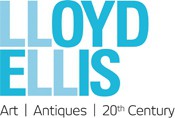My first encounter with Japanese prints was as Keeper of Art at Blackburn Museum & Art Gallery, where I was lucky enough to curate the wonderful T B Lewis collection. Lewis was a textile mill owner, and a compulsive collector. His fine collections of cabinets and pictures were largely sold on his death, but he bequeathed his Japanese prints to his local town. It is a brilliant collection – one of the key collections in the UK. Lewis was acquiring in the late 19th and early 20th century – the heyday for European collections. While it is rich in early prints (it was richer before a disastrous theft in the 1960s), Lewis had a particular – and unusual – interest in prints from the later periods, especially the work of artists of the Utagawa School of the 1820s – 1860s at the end of the Edo period. They were unfashionable, many said degenerate, and they debased the subtlety and elegance of earlier generations of printmakers. But Lewis obviously loved them. Above all, he seems to have admired Utagawa Kunisada (also known as Toyokuni 3), perhaps the most prolific print designer of the 19th century. And he passed his enthusiasm on to me. I love Kunisada’s work. It is so joyous and, at his best, I would argue that he is the equal of any artist anywhere at that period. Considered inferior to his contemporaries, such as Kuniyoshi or Hiroshige, perhaps just because he turned out so vast an oeuvre, much of it devoted to the popular Kabuki theatre, Kunisada is at last beginning to receive the recognition he deserves.
One of the difficulties of taking on the role of a curator is that as soon as you step into the job, you become ‘the expert’. I wasn’t. I’m still not, but I am learning. I blundered around, admiring, but understanding little of this specialised, inward-looking world of ukiyo-e. Under the guidance of Peter Hardie, curator of another wonderful collection of Japanese Prints at Bristol, and a proper specialist in East Asian art, I began to learn. Together we put on the exhibition Kunisada ga, marking the bicentenary of the artist’s birth in 1786.
I’ve had the chance to extend my knowledge of Kunisada through the collection in Birmingham, too (all the B’s), also rich in works by artists of the Utagawa school, and I continue to love them. There is a strength, panache and (occasionally) vulgarity about their work, which brings a vibrancy and colour to what can be a rather overly restrained art form. I try to make sure that we always have some Utagawa works in stock. You’ve got to share the love!






